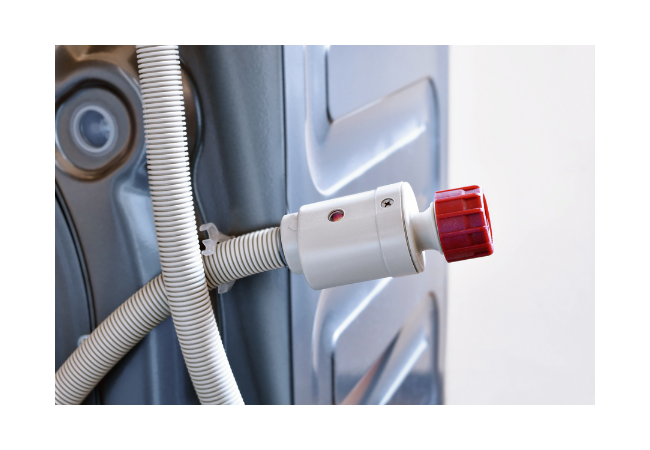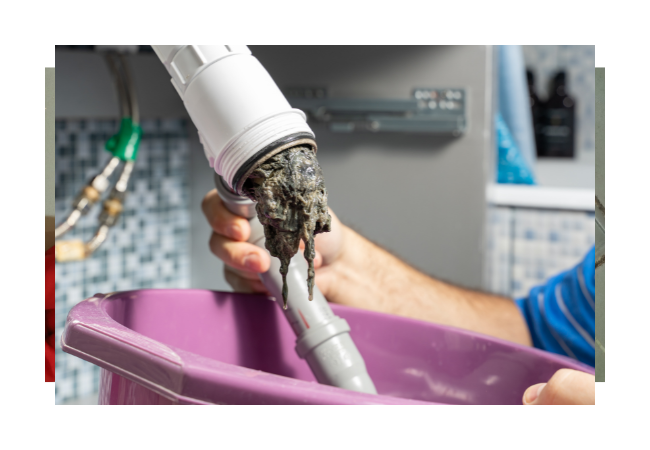Last Updated on July 2, 2023 by admin
Imagine this: you’re going about your day, and suddenly you notice water overflowing from your washing machine standpipe. The mess, the potential damage, and the inconvenience are enough to make anyone feel frustrated and overwhelmed. But fear not, we’re here to help you solve the problem of washing machine standpipe overflowing quickly and easily. In this blog post, you’ll learn about the common causes of standpipe overflow, how to diagnose the issue, and a step-by-step guide to fix it.
Table Of Contents
Short Summary
- Understand the causes of standpipe overflow to address it effectively.
- Clear obstructions in pipes with a drill or chemical cleanser, and reconnect the hose securely.
- Take preventative measures such as regular inspection and routine cleaning to avoid future issues.
Understanding the Causes of Standpipe Overflow

It’s important to understand the common causes of washing machine standpipe overflow in order to address the issue effectively. The three primary culprits behind this pesky problem are clogged drainpipes, incorrect installation, and unstable machines.
In the following subsections, we will delve deeper into each cause and provide insights on how to tackle them.
Clogged Drainpipes
Clogged drainpipes are a common cause of washing machine drain overflow. Blockages in the drain lines restrict water flow, leading to a buildup of backpressure, which in turn results in overflow. Debris such as lint, soap residue, and other material can accumulate in the drainpipe, causing the obstruction.
To address a clogged drainpipe, you can use a plunger or chemical cleanser to dislodge the debris and food items causing the blockage. However, it’s essential to avoid snaking the pipe continuously if the clogging substance has reached further down the drainpipe, as this may exacerbate the issue.
Incorrect Installation
Another cause of washing machine standpipe overflow is the incorrect installation of drain pipes. When the pipes are not installed properly, they can’t handle the high volume of water during the wash cycle, leading to an overflow.
To fix this issue, ensure that the washing machine drain hose is elevated to a minimum of 30 inches from the base of the washer. You can secure your hose to the back of the washer using an anti-siphon clip. The drain should be less than 30 inches away from the base for this to work. Additionally, check for kinking of the hose, as this can also contribute to overflow.
Unstable Machines
Unstable washing machines can also cause standpipe overflow. An unlevel washer or an overloaded machine can result in water entering the standpipe at an inclination, leading to clogging and ultimately overflowing. Signs of an unstable machine include excessive vibration, thumping, banging, and movement during a cycle.
To address this issue, ensure that your washing machine is level by adjusting its feet and placing a level on top of the machine to check for evenness. Also, avoid overloading your washer, as this can cause water to overflow from the hose due to the unit’s inability to manage the volume of water and laundry.
How to Diagnose Washing Machine Drain Overflow

Before attempting to fix the overflow issue, it’s crucial to diagnose the problem accurately. To do this, fill your washing machine with water, turn the dial to the drain setting, and observe how long it takes before the water begins to overflow.
If the water starts flowing out of the drainpipe immediately, it indicates a minor clog that can be cleared with a small drain snake. However, if the drain takes a bit of time before overflowing, the clog is likely further down the plumbing system, requiring a larger drain snake to remove the obstruction.
Remember to turn off the washer before taking any further action.
Fixing the Overflow Issue: Step-by-Step Guide
Now that you understand the causes of washing machine standpipe overflow and have diagnosed the issue, it’s time to fix it. In the following subsections, we will guide you through the process of locating and clearing the drain pipe, reconnecting the hose, and leveling the machine.
First, you will need to locate the drain pipe. This is usually located near the back of the building.
Locating the Drain Pipe
The first step in fixing the overflow issue is locating the washing machine’s drain pipe. The washer drains can be found either in a PVC pipe, a floor drain, or a washing sink, all connected to the washing machine drain pipe.
Once you’ve located the drain pipe, you can proceed to clear any obstructions in the drain line and address the issue during the drain cycle.
Clearing the Obstruction
Start by using a drill or a large steel coat hook to remove any material stuck in the pipe. This should clear the obstruction. Then flush the pipe with a hose or a pail of hot water to remove any remaining debris.
Start by straightening your garden hose. Then use a flashlight to look for any obstructions. If the blockage is serious, it is advisable to use a chemical cleanser. This will help break down the particles.
Reconnecting the Hose
Once the obstruction has been cleared, it’s time to reconnect the washing machine hose. Inspect the washing machine drains and the output connection on the rear of the washing machine for any obstructions and remove any sludge-like debris that may be present.
Securely screw the hose onto the tap and reattach it to the machine.
Leveling the Machine
Finally, ensure that your washing machine is level to prevent future overflow issues. Adjust the feet of the machine by turning them clockwise or counterclockwise to raise or lower the machine.
Place a level on top of the machine to verify its evenness.
Preventative Measures to Avoid Standpipe Overflow

Preventing washing machine standpipe overflow is just as important as fixing it. By taking a few precautionary measures, you can avoid the headaches and potential damage caused by overflow. Regularly inspect your washing machine’s drainage system, ensuring that the standpipe is free from clogs and that the machine is level. Additionally, proper installation of drain pipes and hoses is crucial to prevent overflow issues.
Another essential step in preventing standpipe overflow is routine cleaning of your washing machine. This includes removing lint and debris from the drainpipe and hose, as well as cleaning the machine itself. By maintaining a clean and well-functioning washing machine, you can minimize the risk of standpipe overflow and keep your laundry routine running smoothly.
Alternative Solutions for Persistent Overflow Issues
If you’ve tried all the above methods and still face persistent overflow issues, it might be time to consider alternative solutions. Installing a laundry sink or upgrading to a high-efficiency washing machine can help address overflow problems.
High-efficiency washing machines use less water per cycle, reducing the risk of overflow. Additionally, installing a larger standpipe or utilizing mesh lint catchers can help minimize the risk of clogs and overflowing. By exploring alternative solutions, you can find the best approach to keep your washing machine running efficiently and free from overflow issues.
Summary
In conclusion, solving the problem of washing machine standpipe overflow doesn’t have to be a daunting task. By understanding the common causes, diagnosing the issue, and following our step-by-step guide, you can effectively address the problem and prevent it from happening in the future. Additionally, incorporating preventative measures and considering alternative solutions can keep your washing machine running smoothly and your laundry room free from overflow-related headaches. So, take control of your laundry routine and eliminate standpipe overflow issues for good!
Frequently Asked Questions
Why is my washer standpipe overflowing?
It is likely that your washer standpipe is overflowing because it is clogged. Over time, lint and debris can build up in the pipe leading to a blockage, making it unable to handle the amount of water draining from your washer.
This leads to an overflow situation and should be addressed as soon as possible.
How do you unclog a washer standpipe?
If your washer standpipe is clogged, a drain snake is the best way to unclog it. Start by pushing the end of the snake into the opening and releasing it into the pipe. Once you feel resistance, keep pushing until the clog breaks free.
Then rotate clockwise or counterclockwise until the clog is cleared.
Can a standpipe get clogged?
Yes, a standpipe can get clogged. Hair is the most common culprit, and even microscopic hairs can contribute to a blockage in the pipes. Taking preventive steps such as installing drain catchers or using liquid drain cleaners can help minimize the risk of standpipe clogs.
What are the common causes of washing machine standpipe overflow?
Poorly installed and clogged drainpipes, as well as an unstable washing machine, are all possible causes of a standpipe overflow.
How can I diagnose a washing machine drain overflow?
Check the drain hose to ensure it is connected properly and is not clogged. Additionally, check the filter for any obstructions.
If both of these are in order, then you may need to contact a professional.
